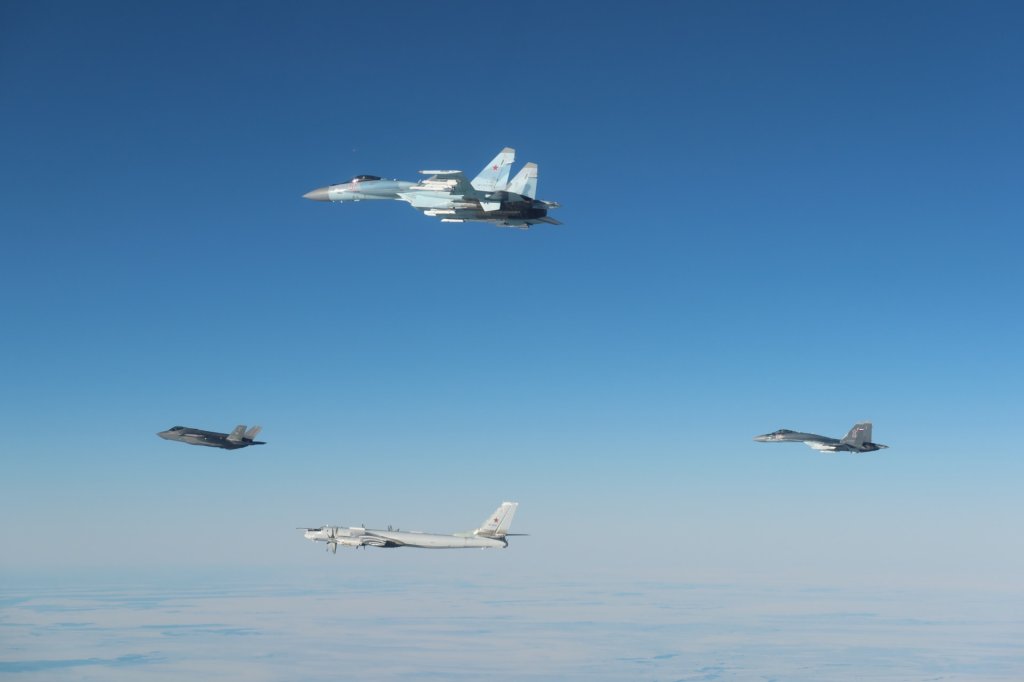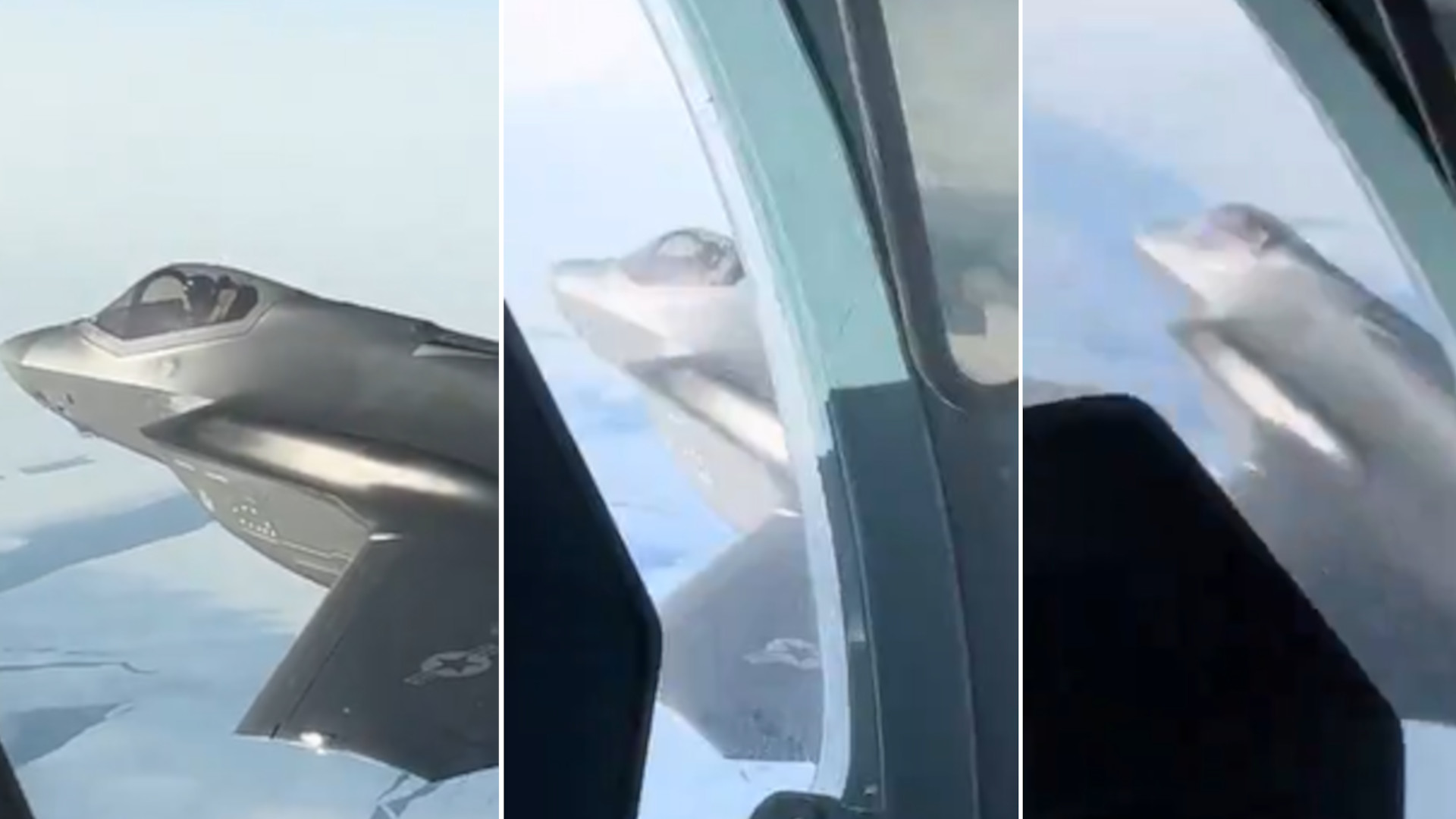A video has emerged showing what looks to be a very close encounter between a Russian Su-35 Flanker-E and an Alaska-based U.S. Air Force F-35A Joint Strike Fighter. A variant of the Russian Tu-95 Bear bomber is also seen in the footage.
The clip, seen in the social media post below, first appeared earlier today on the Fighterbomber Telegram channel, which has ties to the Russian Aerospace Forces. The brief footage appears to show the F-35A encroaching on the Flanker, briefly ending up forward and right of it, very close to its nose, although it is hard to be certain. No additional context is provided, and it is unclear where or when exactly the video was shot.
The last time the U.S.-Canadian North American Aerospace Defense Command (NORAD) publicly announced having detected and tracked Russian military aircraft off the coast of Alaska, which is not an uncommon occurrence, was back in February. NORAD subsequently released pictures showing Air Force F-35As flying alongside Russian Su-35s and Tu-95s in international airspace within the Alaska Air Defense Identification Zone (ADIZ). Neither U.S. nor Russian authorities appear to have made any mention at that time of unusually close and/or potentially unsafe maneuvering on either side. Such incidents between U.S. and Russian military aircraft, as well as American and Chinese ones, are hardly unheard of, including off Alaska.
TWZ has reached out to NORAD for more information.

Regardless of the exact context of the encounter between the Flanker and the F-35A, there are inherent risks, including of a potential collision, when any two aircraft, let alone fast-moving combat jets, fly very close together.
As TWZ has noted on many occasions in the past, “unprofessional” maneuvering between U.S. and Soviet aircraft was commonplace during the Cold War, and this continued with the Russians afterward. China’s air arms have also become well-known for similar practices. At the same time, there has been something of an uptick in these kinds of ‘close encounters’ between American aircraft and their Russian and Chinese counterparts in recent years, both around the U.S. homeland and other locales abroad. These kinds of encounters can extend down into the maritime and ground domains, as well.
Just last month, videos also emerged showing a Russian Il-38 May maritime patrol plane buzzing the U.S. Navy’s aircraft carrier USS Carl Vinson while closely bracketed by an F-35C and an F/A-18E/F Super Hornet. The Carl Vinson Carrier Strike group was taking part in an exercise with Japanese and South Korean Forces in the East Sea (Sea of Japan) at the time.
In the Pacific, including around Alaska, Russian and Chinese air and maritime forces are increasingly conducting routine operations together, as well. A pair of China’s H-6 cruise missile carrier aircraft notably flew their first-ever sorties off Alaska’s coast last year as part of one of these joint patrols.
Absent a major change in Washington’s relationship with Moscow and Beijing, this kind of air and maritime activity, and the potential therein for close encounters between the parties involved, only looks set to continue.
Update: 9:35 PM EST –
A NORAD spokesperson has now provided TWZ with the following statement:
“While we cannot verify the authenticity of the video, NORAD acknowledges an intercept of Russian aircraft on Feb. 18, 2025. The flight maneuvers of the Russian aircraft shown in the video are once again not what one would expect to see from a professional Air Force.”
Contact the author: joe@twz.com
